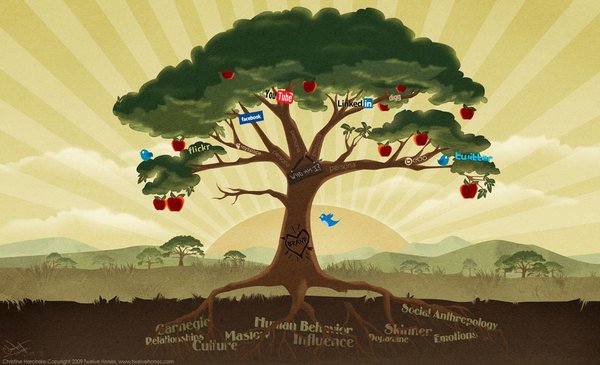
Any chief brand officer, director or strategist who still thinks social media is solely an amplification tool that helps connect with an audience are missing five other spokes in their wheelhouse.
Social media now is much more complex and unique as businesses become more social by design. Social media practically runs modern business organizations when you speak with the most disruptive of marketers. Yet at many organizations, CMOs still designate social media as a small business unit, staffed by interns to control.
Even at Apple, one of the most relevant brands in the world, they have only recently paid more attention to social media. Some of the most progressive organizations were adopting its usage back in 2006 or 2007 as it became more commercial. All one could do then was simply amplify. A lot has changed. So what are the six areas of social media in 2016 and how should they play into your brand’s strategy?
1. Paid Media. Why do so many brand strategists not realize that 90% of social media is about paid amplification using targeting tools? The best platforms to test messages in a variety of formats (video, imagery, text) is on social. TV may be big, but it’s expensive and there are no ROI analytical measurement tools like there are on social platforms.
2. Influencer Programs have only grown in size and scope the past few years. But this is because of the spread of the social web and the ability to influence niche groups of people habituating the web around social, interest and economically-driven graphs. This is best done in one-to-one, personalized communication, not via mass, blast your 1 million followers with spam status updates.
3. Social is a testing lab as much as it is a place to communicate. The best brands test creative on platforms before they figure out what may work best for the brand overall. Instagram isn’t just a photo sharing network, but one of the best creative labs available in the modern era. Snapchat isn’t just a place to update followers in the moment but a forum to experiment with the moving image. If you’re not using social to test creative, you’re missing the point of a feedback loop in real time.
4. Vertical imagery, live video, podcasting. Almost everything that has become mainstream the past few years in communication broke with how people have hacked the user experience on social media. Just like the creative feedback loop, if you’re trying to embed innovation at your company and are not developing products or communication strategies that are social by design, you’re missing a huge relevant focus group ready and willing to give feedback in real time.
5. Top brands like Coca-Cola and Pepsi don’t just monitor social media for brand mentions but words people use with their brand. Coke noticed so many people used the word pizza with mentions of their brand that they made more co-op marketing deals with pizza restaurants and chains. There is a ton of intelligence in social listening yet too many organizations aren’t set up to use the tools necessary for their competitive advantage.
6. Customer Relationship Management (CRM). CRM is why Salesforce and Google are interested in purchasing Twitter. CRM and customer service happen more on social media than ever before. But not only is the action of customer service that’s important to retain customers but tying in listening with CRM can help you improve your business and elevate your brand. As Bill Gates once said, “Your most unhappy customers are your greatest source of learning.”
Learn how to keep your brand relevant in the 21st Century in my new book Disruptive Marketing.
The Blake Project Can Help: Accelerate B2C and B2B Brand Growth Through Powerful Emotional Connections
Branding Strategy Insider is a service of The Blake Project: A strategic brand consultancy specializing in Brand Research, Brand Strategy, Brand Licensing and Brand Education
FREE Publications And Resources For Marketers











